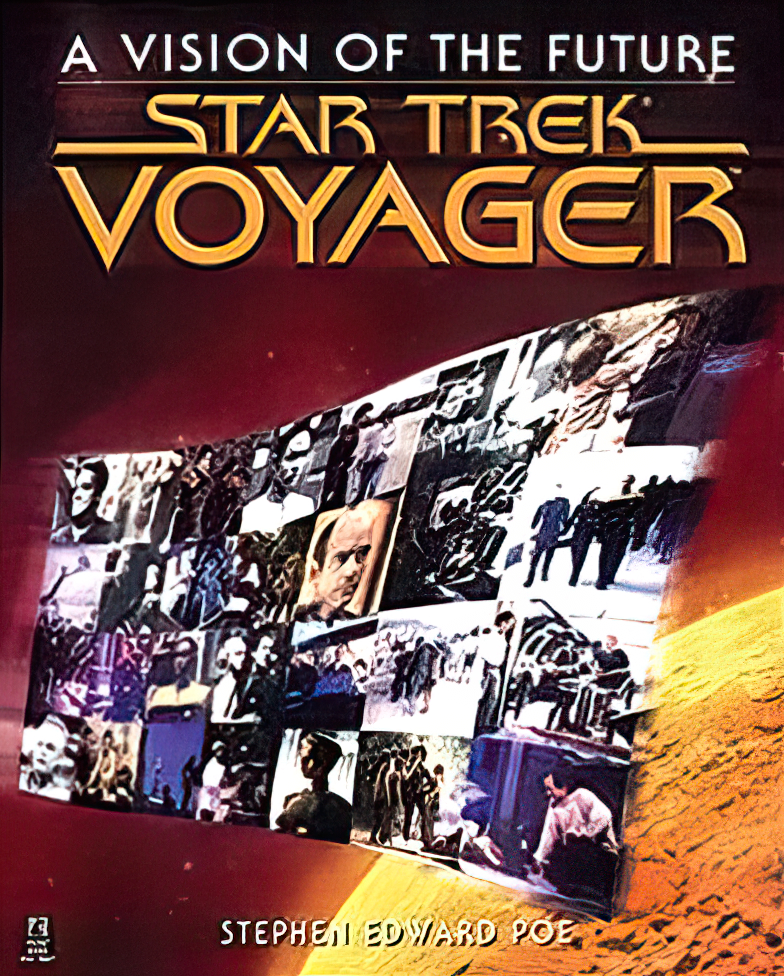 Story: A behind-the-scenes look at the making of the first two seasons of Voyager, including the torturous pre-production process of developing the show’s premise.
Story: A behind-the-scenes look at the making of the first two seasons of Voyager, including the torturous pre-production process of developing the show’s premise.
Review: This book received much pre-release hype as being a product of the same author who penned the justly acclaimed 1968 behind-the-scenes story of “The Making of Star Trek”, though this time writing under his own name instead of the pseudonym of “Stephen E. Whitfield.” Since Poe’s definitive tome inspired many later works, including the excellent books by Judith and Garfield Reeves-Stevens, it stands to reason that surely he can exceed his own previous work and give us a Star Trek behind-the-scenes book like no one else can.
In some respects, he succeeds at this, and in others, he doesn’t. Perhaps the most extraordinary aspect of the book is the friendly, down-to-earth narrative which demonstrates the closeness and family feeling on the set and in the offices at Paramount. Sometimes the narrative is a bit grating – one instance which comes to mind is the story of an unauthorized visitor getting into the soundstage to see Kate Mulgrew, and the author tells this story from so many different perspectives, one can only assume that human cloning experiments have progressed enough to put one man in two or three different places at once. But many times, this blow-by-blow storytelling illustrates the strengths and, in a few cases, weaknesses of the production process.
As with the Reeves-Stevens books, special attention is paid to the brainstorming process that went into Voyager’s creation, and this information again points out both the strengths and weaknesses of the show. Even early on, nobody really seemed to have a clue as to what Kes (a character who was born with no name except for the nickname “the mayfly”) would be doing on Voyager’s journey. Tuvok originally started life in engineering. Paris was originally going to be the tactical officer. And Chakotay may or may not be of Hopi descent.
A worthwhile, if expensive, read, this book comes very close to justifying its high price tag by being nice and thick, with only a few pictures, as was the case with “The Making of Star Trek”. Most of the weaknesses of the book are not Poe’s fault, but rather the flaws that exist in Voyager’s basic premise, held under the book’s magnifying glass for extended periods of time.
Year: 1998
Author: Stephen Edward Poe
Publisher: Pocket Books
Pages: 372

